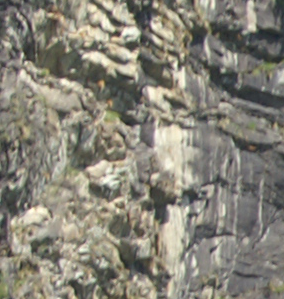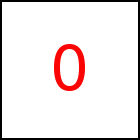Selectors for multiple Transitions - taccGL™ Tutorial
mClass Selector

Element 2

Transitions can be created for multiple elements at once. For
example these 3 images all share the css class "myclass". Using
the selector mClass it is possible to select all
elements of that class and to create a transition, just as
a would do. Then all methods called automatically apply
to all these transitions at once, e.g. all will rotate according
to rotateMiddle(0,1,0).
paint, hide, and visAtEnd must be called
explicitly since mClass just takes over the function
of a but not the additional functionality of actor.
taccgl.mClass('myclass') . paint(). hide(). visAtEnd() . rotateMiddle(0,1,0) . start(); | RUN |
taccgl.mClass('myclass') . paint(). hide(). visAtEnd() . to ({ry:1}) . start(); | RUN |
taccgl.mClass('myclass') . paint(). hide(). visAtEnd() . to ({el:'ex5-1',ex:-1}) . start(); | RUN |
Sequence
Using sequence the transitions can be performed in a sequence rather than simultaneously.
It receives the total duration of the sequence as parameter.
taccgl.mClass('myclass') . paint(). hide(). visAtEnd() . rotateMiddle(0,1,0) . sequence(3). start(); | RUN |
taccgl.mClass('myclass') . paint(). visAtEnd() . rotateMiddle(0,1,0) . sequence(3). hideAtBegin(). start(); | RUN |
taccgl.mClass('myclass') . paint(). hide(). showBefore(). visAtEnd() . rotateMiddle(0,1,0) . sequence(3,.5). start(); | RUN |
taccgl.mClass('myclass') . paint(). hideAtBegin(). visFinal() . showAfter() . to ({ry:1}) . sequence(3,-.2). start(); | RUN |
Sequence also has a second parameter specifying the time gap between two steps of the sequence.
The gap can also be negative which makes steps overlap.
Variables
Selectors like mClass return a set of transitions as result. Most methods that apply
on a single transition can apply on a set of transitions as well. In this case the
a method is applied to all transitions in the set.
var m=taccgl.mClass('myclass'); m . paint(). hide(). visAtEnd(); m . to ({el:'ex20'}) . sequence(3). start(); | RUN |
Using getI a particular transition within a set can be selected.
The following example makes the 2nd transition move to a different position
and rotate.
var m=taccgl.mClass('myclass') . paint(). hide(). visAtEnd() . to ({el:'ex20'}); m.getI(1). to ({el:'ex20',ox:250}) . rotateMiddle(0,1,0); m . sequence(3). start(); | RUN |
Iteration

Element 2

Often one wants to supply expressions to the methods called for
each element of a set. In the next example, we want to move the
elements into a diagonal position and put them to the
coordintates {ry:i+1}. Thereby i is the number
of the transition in the set (starting from 0). So the first
element is moved to position 1, the second to 2, and the third to
3. In order to do so, we need the iterator method mp. mp
has as parameter a javaScript function, which is then called for each
element of the set. This functions has parameters (t,i) whereby
t is the transition to be processed and i its position in
the ordered set.
taccgl.mClass('exclass') . paint(). hide(). visAtEnd() . mp ( function(t,i){t.to ({ry:i+1})} ).start(); | RUN |
taccgl.mClass('exclass') . paint(). hide(). visAtEnd() . mp ( (t,i)=>{t.to ({ry:i+1})} ).start(); | RUN |
Mult
The mult methods allows to multiply each transition in the set for a
given number of times. So the example below turns the given 3 transitions into 6 transitions,
whereby each transition is duplicated.
taccgl.mClass('exclass') . paint(). hide(). visAtEnd() . mult(2). mp ( (t,i)=>{t.to ({el:ex50,rx:i})} ).start(); | RUN |

Very often mult is used on sets having just a single element.
taccgl.ma('ex60') . paint(). hide(). visAtEnd() . mult(6). mp ( (t,i)=>{t.to ({rx:i*1.1})} ) .start(); | RUN |
taccgl.ma('ex60') . paint(). hide(). visAtEnd() . mult(36). mp ( (t,i)=>{ t.to ({rx:i%6*1.1, ry:Math.floor(i/6)*1.1}) } ) .start(); | RUN |
m= taccgl.ma('ex60') . paint(). hide(). visAtEnd() . mult(36). mp ( (t,i)=>{t.to ({rx:i%6*1.1, ry:Math.floor(i/6)*1.1})} ) .start(); m.cont().dur(5).start() | RUN |
taccgl.ma('ex60') . hide(). visAtEnd(). paint() .resize(1,100) . mult(900) . mp ( (t,i)=>{ t .to({ox:i,ry:Math.sin(i/900*Math.PI*2)}) }) .start(); | RUN |
taccgl.ma('ex60') . hide(). visAtEnd(). color("red").resize(1,1) . mult(900) . mp ( (t,i)=>{ t.from({ox:i}) .to({ox:i,oy:100*Math.sin(i/900*Math.PI*10)}) }) .start(); | RUN |
Slicing

Slicing cuts transitions into vertical or horizontal slices. There are the sliceH and sliceV
methods for this purpose. They get as parameter the number n of slices to cut. Cutting means each transition in
the set is replaced by n transitions, each new transition referring to a slice of the
original transition, otherwise performing the same animations.
taccgl.ma('ex80') . paint(). hide(). visAtEnd() .sliceH(4) . sequence(3) . start(); | RUN |
taccgl.ma('ex80') . paint(). hide(). visAtEnd() .sliceV(4) . showBefore() .showAfter () .rotateMiddle(0,0,1) .sequence(3,-0.5) . start(); | RUN |
taccgl.ma('ex80') . paint(). hide(). visAtEnd() .sliceH(299) . showBefore() .showAfter().rotateMiddle(0,0,1) .sequence(3,-0.5) . start(); | RUN |
taccgl.ma('ex80') . paint(). hide(). visAtEnd() .sliceH(20) . showBefore() .showAfter() .from({x:0,rx:-1,oy:-100}) .sequence(3,-1.5). vEnd(0,0,0). start(); | RUN |
taccgl.ma('ex80') . paint(). hide(). visAtEnd() .sliceH(299) . showBefore() .showAfter() .mp ( (t,i)=>{t.to({ox:200*Math.sin(i/100)})}) . start(); | RUN |
It is also possible to use both sliceH and sliceV to cut a transition into rectangles:
taccgl.ma('ex80') . paint(). hide(). visAtEnd() .sliceH(4) .sliceV(4) . sequence(3) . start(); | RUN |
taccgl.ma('ex80') . paint(). hide(). visAtEnd(). showafter().sliceH(4) .sliceV(4) .rotateMiddle(1,0,0). rotatePart(Math.PI,Math.PI*2). sequence(3,-0.2) . start(); | RUN |
taccgl.ma('ex80') . paint(). hide(). visFinal(). showafter() .sliceH(4) .sliceV(4) . rotateMiddle(0,1,0) .rotatePart(Math.PI,Math.PI*2). alpha(0,1) . mp ( t=>{t.startTime(Math.random()*2)} ) . start(); | RUN |
taccgl.ma('ex80') . paint(). hide(). visFinal(). showbefore() . sliceH(4) .sliceV(4) . alpha(1,0) . mp ( t=>{ t.startTime(Math.random()*0) .to({ox:600*Math.random()-300,oy:600*Math.random()-300}) } ) . start(); | RUN |
taccgl.ma('ex80') . paint(). hide(). visFinal(). showbefore() . sliceH(24) .sliceV(24) . alpha(1,-0.3). dur(2) . mp ( t=>{ t.startTime(Math.random()*0) .to({ox:2000*Math.random()-1000,oy:2000*Math.random()-1000}) .posZ(0,-4000) .vEnd(0,0,0) } ) . start(); | RUN |
taccgl.ma('ex80') . paint(). hide(). visFinal(). showbefore() . sliceH(100) .sliceV(100) . alpha(1,0). dur(0.5) . mp ( t=>{ t.startTime(Math.random()*0) .to({ox:1000*Math.random()-500,oy:1000*Math.random()-500}) .vEnd(0,0,0) } ) . start(); | RUN |
WebGL™ is a trademark of the Khronos Group Inc.
|





